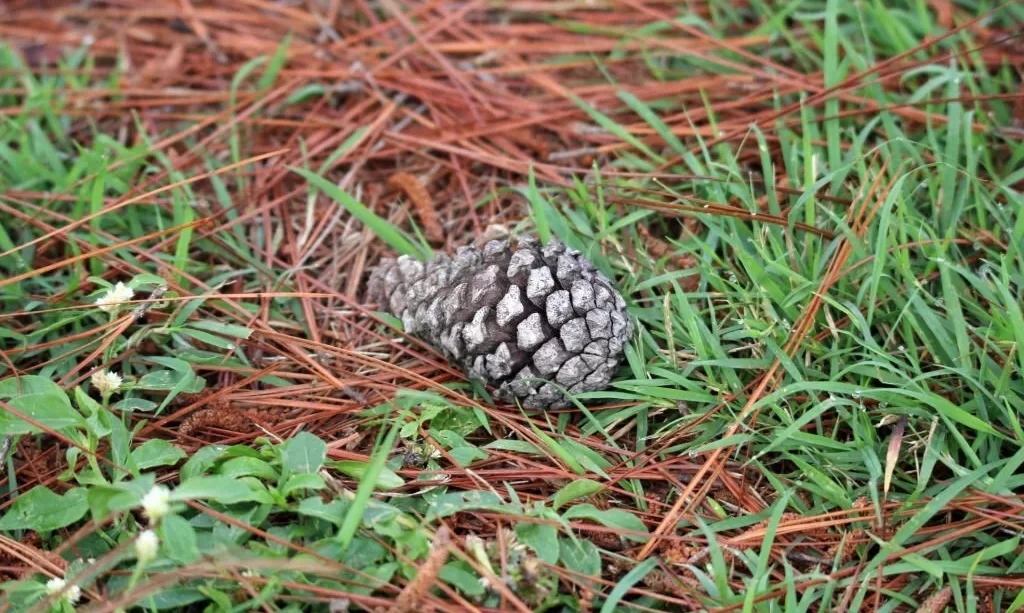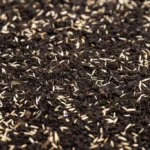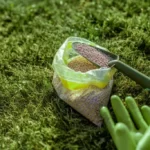In the realm of gardening and landscaping, the choice of mulch can greatly influence the health and aesthetics of your outdoor spaces. Among the diverse array of mulching options available, pine needles stand out as a natural and visually appealing choice. However, as gardeners and homeowners embrace the use of pine needles as mulch, a common question arises: Can pine needles kill grass? In this exploration, we will delve into the world of pine needles and their impact on grass, unraveling the myths and realities surrounding their use in gardens and landscapes.
Pine Needles as Mulch
Pine needles, also known as pine straw, have earned their place as a favored mulch material among garden enthusiasts. These slender, rust-colored needles, shed naturally by various pine tree species, offer a range of benefits when used as mulch in landscaping and gardening:
- Moisture Retention: One of the primary advantages of pine needles is their ability to retain moisture in the soil. The dense layer of needles helps reduce evaporation, ensuring that the soil beneath remains consistently moist. This can be particularly beneficial in regions with hot and dry climates or during periods of drought.
- Weed Suppression: Pine needles create a natural barrier that inhibits the growth of weeds. Their densely packed structure makes it difficult for weeds to penetrate, reducing the need for herbicides and manual weeding efforts.
- Soil Temperature Regulation: Pine needle mulch also helps regulate soil temperatures. In colder seasons, it acts as an insulating layer, protecting plant roots from frost. In warmer months, it shields the soil from excessive heat, preventing it from becoming too hot and stressing plants.
- Soil Acidification: Pine needles are inherently acidic due to the presence of compounds like tannins. As they break down, they can gradually lower soil pH levels, which is beneficial for acid-loving plants such as azaleas, rhododendrons, and blueberries.
Pine needles’ aesthetic appeal further adds to their popularity as mulch. Their warm, earthy hues create a natural and visually pleasing backdrop for garden beds and pathways. However, it’s the potential impact of pine needles on grass that has led to questions and concerns, prompting us to explore their role in maintaining a healthy lawn.
Pine Needle Acidity and Grass
One of the key factors that prompt questions about using pine needles as mulch around grass is their inherent acidity. Pine needles contain natural compounds, including tannins, that contribute to their acidity. As pine needles break down over time, these compounds can gradually lower the pH levels of the surrounding soil.
For many grass species, which typically thrive in neutral to slightly acidic soils, this change in soil pH can be a cause for concern. Grasses may exhibit varying degrees of sensitivity to soil acidity, and the impact of pine needles on grass health can depend on several factors:
- Grass Species: Different grass species have varying tolerances for soil acidity. Some grasses, such as centipede grass, are more sensitive to changes in pH, while others, like fescues, can tolerate slightly acidic conditions.
- Quantity of Pine Needles: The quantity of pine needles used as mulch can influence the degree of soil acidification. Heavy and repeated applications of pine needles may have a more pronounced effect on soil pH.
- Soil Type: The composition of the underlying soil also plays a role. Sandy soils, which naturally have a more acidic pH, may be less affected by pine needles’ acidity than clay soils.
Pine Needles and Grass Health
Understanding the potential impact of pine needles on grass health is essential for maintaining a vibrant lawn. While it’s true that the gradual acidification of soil due to pine needles can pose challenges, it’s important to note that pine needles are not inherently grass killers. Instead, their effects on grass can be nuanced:
- Grass Stress: Grasses may exhibit signs of stress, such as yellowing or slow growth, in response to soil acidification caused by pine needles. This stress can be more pronounced in sensitive grass species.
- Alleviating Stress: Fortunately, the effects of pine needles on grass can often be mitigated with proper care. Regularly monitoring soil pH and making necessary adjustments, such as applying lime to raise pH levels, can help maintain a suitable environment for grass to thrive.
- Positive Aspects: It’s worth noting that in landscapes where specific acid-loving plants are present, the natural soil acidification caused by pine needles can be advantageous. These conditions can create a hospitable environment for acid-loving plants while requiring careful attention to grass health.
In summary, while pine needles do have the potential to influence soil pH and affect grass health, they are not a direct threat to grass. The key to maintaining a healthy lawn when using pine needle mulch lies in understanding the unique needs of your grass species, regular monitoring of soil conditions, and implementing appropriate care practices to create a harmonious balance between grass and pine needles in your landscape.
Potential Concerns and Mitigation
As gardeners and homeowners explore the use of pine needles as mulch around grass, certain concerns may arise. It’s essential to address these concerns and provide practical solutions for mitigating any potential issues:
- Nutrient Leaching: Some gardeners worry about nutrient leaching due to the acidity of pine needles. To mitigate this concern, consider periodic soil testing to monitor nutrient levels and adjust fertilization accordingly. Balanced fertilization can help maintain grass health.
- Soil pH Imbalance: If soil pH becomes too acidic due to pine needle mulch, it can hinder grass growth. To address this issue, apply lime to the soil as needed to raise pH levels and create a more favorable environment for grass.
- Selective Mulching: Implement selective mulching practices by using pine needles primarily in garden beds and around acid-loving plants, while avoiding direct contact with grassy areas. This approach allows you to enjoy the benefits of pine needles without risking grass health.
Proper Use of Pine Needles
To ensure a harmonious coexistence between pine needles and grass in your landscape, it’s crucial to follow best practices for their proper use:
- Layer Thickness: Apply pine needle mulch in a layer that’s approximately 2 to 3 inches thick. This depth provides effective weed suppression and moisture retention without excessive soil acidification.
- Maintain Boundaries: Create clear boundaries between pine needle mulch and grassy areas. Edging materials like stones or plastic barriers can help prevent direct contact between the mulch and grass.
- Regular Monitoring: Periodically monitor the health of your grass, paying attention to any signs of stress or discoloration. Conduct soil tests as needed to assess pH levels and make adjustments accordingly.
Conclusion and Key Takeaways
In conclusion, the use of pine needles as mulch can enhance the beauty and functionality of your garden and landscape. While pine needles do possess inherent acidity that can influence soil pH and grass health, they are not a direct threat to your lawn. Instead, they offer numerous benefits, such as moisture retention and weed suppression, when used thoughtfully.
Key takeaways from this exploration include an understanding of the potential concerns associated with pine needles and practical mitigation strategies. Gardeners should embrace pine needles as a valuable mulching option while maintaining a balanced approach to grass care. By monitoring soil conditions, adjusting pH levels as needed, and respecting the unique needs of their grass species, gardeners can create a landscape where pine needles and grass coexist harmoniously, contributing to the overall beauty and health of outdoor spaces.



